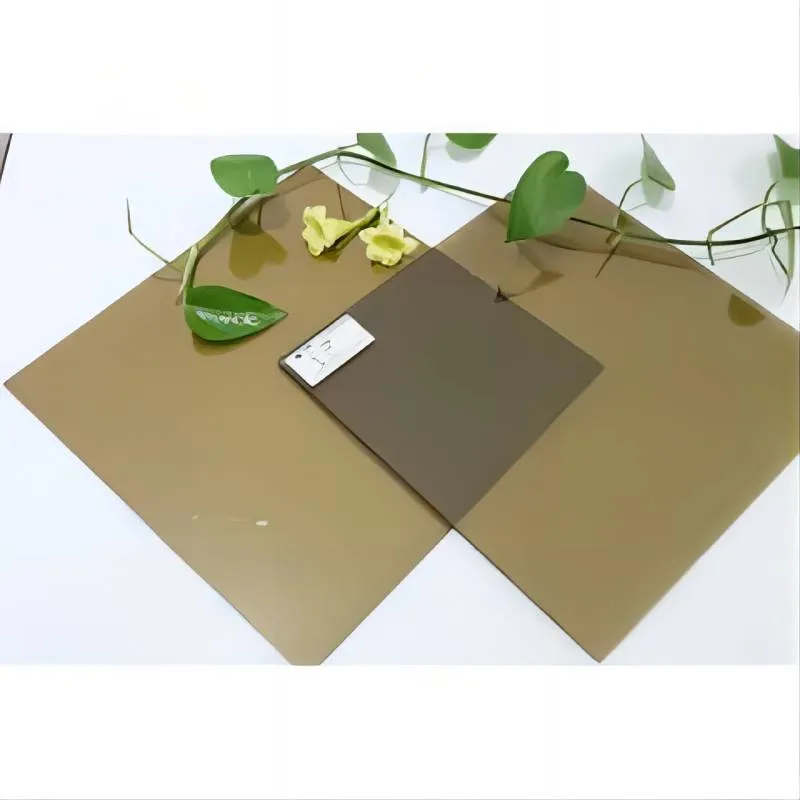The Use of Glass in Architecture
Glass has evolved from a mere functional material to a fundamental element that shapes architectural design and experience. Its unique properties, including transparency, lightness, and versatility, make it a popular choice for modern buildings, both in aesthetics and functionality.
One of the primary advantages of glass in architecture is its ability to control natural light. By allowing sunlight to permeate through, glass enhances interior spaces, reducing the reliance on artificial lighting during the day. This not only lowers energy costs but also creates a more pleasant and inviting environment. Daylight provides a psychological uplift to occupants, improving mood and productivity. Architects often design large panoramic windows, glass facades, and skylights to maximize natural light, blending the indoors with the outdoors.
Furthermore, glass brings a sense of openness and fluidity to architectural designs. In urban landscapes where space is often at a premium, glass structures can visually expand spaces and provide a connection to the surrounding environment. The transparency of glass not only allows for sweeping views but also invites the vibrancy of city life into buildings, fostering a sense of community. In skyscrapers and commercial buildings, expansive glass walls often reflect cityscapes, creating a dialogue between the structure and its context.
Moreover, glass promotes sustainability in architecture. Advanced glazing technologies have introduced energy-efficient glass that can regulate heat transfer, reducing the need for heating and cooling systems. For instance, low-emissivity (or low-E) glass can reflect infrared light, thereby maintaining warm indoor temperatures without sacrificing natural light. Additionally, innovations like electrochromic glass, which can change tint based on sunlight exposure, enhance energy efficiency while providing comfort for the occupants.
use of glass in architecture
Architectural trends have embraced glass as a key material in designing modern homes and public spaces. Glass bridges, staircases, and flooring can add an element of modernity and spaciousness to buildings. However, the use of glass is not limited to aesthetics; it also allows for structural innovation. Glass can be engineered to bear loads and withstand forces, enabling architects to experiment with more daring and creative forms.
Safety concerns, however, do arise with the extensive use of glass in architecture. Designers must consider aspects such as thermal stress and impacts. Tempered glass and laminated glass are commonly utilized for their strength and durability. Additionally, safety features such as shatterproof glass and reinforced frameworks are essential in ensuring occupant safety without compromising the aesthetic appeal that glass offers.
Culturally, the use of glass in architecture can reflect societal values. For instance, in contemporary design, the transparency of glass can symbolize honesty and openness, encouraging a sense of connection between the public and private realms. In contrast, highly reflective glass can offer privacy, allowing buildings to serve as sanctuaries while still engaging with their surroundings.
In conclusion, the use of glass in architecture is a multifaceted subject that encompasses elements of design, functionality, sustainability, and safety. As technology continues to advance, architects are likely to find even more innovative ways to incorporate glass into their work, pushing the boundaries of what is possible. Whether through creating ethereal spaces filled with light or designing energy-efficient structures, glass remains an integral part of modern architectural expression. The enduring charm and utility of glass undoubtedly secure its status as a cornerstone of contemporary architectural practice.
 Afrikaans
Afrikaans  Albanian
Albanian  Amharic
Amharic  Arabic
Arabic  Armenian
Armenian  Azerbaijani
Azerbaijani  Basque
Basque  Belarusian
Belarusian  Bengali
Bengali  Bosnian
Bosnian  Bulgarian
Bulgarian  Catalan
Catalan  Cebuano
Cebuano  Corsican
Corsican  Croatian
Croatian  Czech
Czech  Danish
Danish  Dutch
Dutch  English
English  Esperanto
Esperanto  Estonian
Estonian  Finnish
Finnish  French
French  Frisian
Frisian  Galician
Galician  Georgian
Georgian  German
German  Greek
Greek  Gujarati
Gujarati  Haitian Creole
Haitian Creole  hausa
hausa  hawaiian
hawaiian  Hebrew
Hebrew  Hindi
Hindi  Miao
Miao  Hungarian
Hungarian  Icelandic
Icelandic  igbo
igbo  Indonesian
Indonesian  irish
irish  Italian
Italian  Japanese
Japanese  Javanese
Javanese  Kannada
Kannada  kazakh
kazakh  Khmer
Khmer  Rwandese
Rwandese  Korean
Korean  Kurdish
Kurdish  Kyrgyz
Kyrgyz  Lao
Lao  Latin
Latin  Latvian
Latvian  Lithuanian
Lithuanian  Luxembourgish
Luxembourgish  Macedonian
Macedonian  Malgashi
Malgashi  Malay
Malay  Malayalam
Malayalam  Maltese
Maltese  Maori
Maori  Marathi
Marathi  Mongolian
Mongolian  Myanmar
Myanmar  Nepali
Nepali  Norwegian
Norwegian  Norwegian
Norwegian  Occitan
Occitan  Pashto
Pashto  Persian
Persian  Polish
Polish  Portuguese
Portuguese  Punjabi
Punjabi  Romanian
Romanian  Russian
Russian  Samoan
Samoan  Scottish Gaelic
Scottish Gaelic  Serbian
Serbian  Sesotho
Sesotho  Shona
Shona  Sindhi
Sindhi  Sinhala
Sinhala  Slovak
Slovak  Slovenian
Slovenian  Somali
Somali  Spanish
Spanish  Sundanese
Sundanese  Swahili
Swahili  Swedish
Swedish  Tagalog
Tagalog  Tajik
Tajik  Tamil
Tamil  Tatar
Tatar  Telugu
Telugu  Thai
Thai  Turkish
Turkish  Turkmen
Turkmen  Ukrainian
Ukrainian  Urdu
Urdu  Uighur
Uighur  Uzbek
Uzbek  Vietnamese
Vietnamese  Welsh
Welsh  Bantu
Bantu  Yiddish
Yiddish  Yoruba
Yoruba  Zulu
Zulu 

